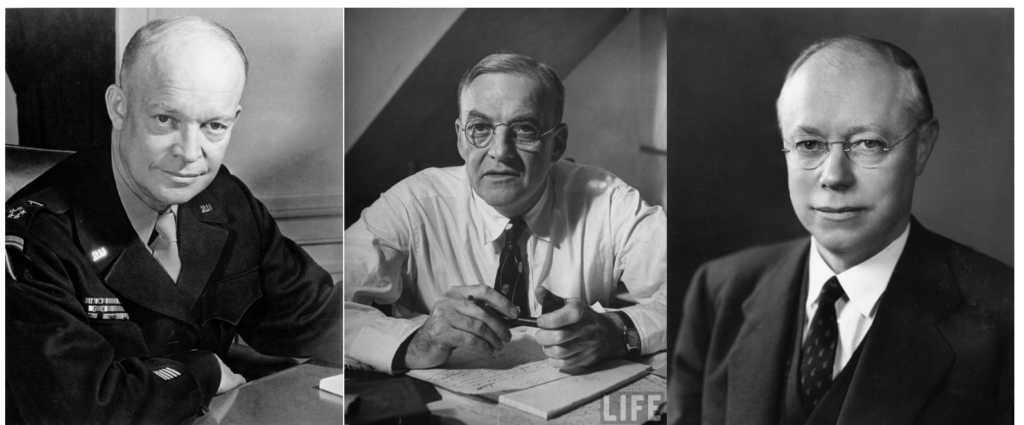How did the Eisenhower-Dulles “New Look” policy change the US approach to the Cold War?
Chapter outline
I. Eisenhower’s perspective
II. Dulles’s perspective
III. The New Look (1953-61)
IV. Communication Problems
The GOP Foreign Policy Landscape
- President Dwight Eisenhower
- Secretary of State John Foster Dulles
- Senator Robert Taft
Defining the New Look (1953-61)
Operation Solarium (1953) and move from symmetry to asymmetry
- Nuclear deterrence
- “Massive retaliation” and “brinkmanship”
- Conventional vs. nuclear weapons
- Alliances
- Multilateralism and unilateralism
- NATO (1949-55), SEATO (1954), CENTO (1955)
- Neutrality or non-aligned nations (Bandung Conference, 1955)
- Psychological warfare
- “Liberation” and “rollback” and “Open Skies”
- Propaganda (Voice of America)
- Covert operations
- Iran (1953) and Guatemala (1954)
- Other CIA actions
- Negotiations
- Death of Stalin (1953) and return of summit diplomacy
- Geneva (1955), Camp David (1959), Paris (1960)
Debating Eisenhower’s Legacy
How should historians interpret President Dwight Eisenhower’s now-famous farewell address (January 1961), which invoked a warning about the rising “military-industrial complex”?
From National Archives:
From New York Times:

